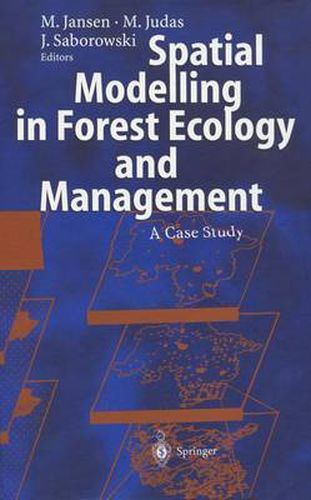Readings Newsletter
Become a Readings Member to make your shopping experience even easier.
Sign in or sign up for free!
You’re not far away from qualifying for FREE standard shipping within Australia
You’ve qualified for FREE standard shipping within Australia
The cart is loading…






This title is printed to order. This book may have been self-published. If so, we cannot guarantee the quality of the content. In the main most books will have gone through the editing process however some may not. We therefore suggest that you be aware of this before ordering this book. If in doubt check either the author or publisher’s details as we are unable to accept any returns unless they are faulty. Please contact us if you have any questions.
At the end of the 1970s, when signs of destabilization of forests became visible in Eu rope on a large scale, it soon became obvious that the syndrome called forest de cline was caused by a network of interrelated factors of abiotic and biotic origin. All attempts to explain the wide-spread syndrome by a single cause, and there were many of them, failed or can only be regarded as a single mosaic stone in the network of caus es behind the phenomenon. Forest ecosystems are highly complex natural or quasi natural systems, which exhibit different structures and functions and as a conse quence different resilience to internal or external stresses. Moreover, forest ecosys tems have a long history, which means that former impacts may act as predisposing factors for other stresses. The complexity and the different history of forest ecosys tems are two reasons that make it difficult to assess the actual state and future devel opment of forests. But there are two other reasons: one is the large time scale in which forests react, the other is the idiosyncrasy of the reactions on different sites. Due to the slow reaction and the regional complexity of the abiotic environment of forest ecosys tems, a profound analysis of each site and region is necessary to identify the underly ing causes and driving forces when attempting to overcome the destruction of forest ecosystems.
$9.00 standard shipping within Australia
FREE standard shipping within Australia for orders over $100.00
Express & International shipping calculated at checkout
This title is printed to order. This book may have been self-published. If so, we cannot guarantee the quality of the content. In the main most books will have gone through the editing process however some may not. We therefore suggest that you be aware of this before ordering this book. If in doubt check either the author or publisher’s details as we are unable to accept any returns unless they are faulty. Please contact us if you have any questions.
At the end of the 1970s, when signs of destabilization of forests became visible in Eu rope on a large scale, it soon became obvious that the syndrome called forest de cline was caused by a network of interrelated factors of abiotic and biotic origin. All attempts to explain the wide-spread syndrome by a single cause, and there were many of them, failed or can only be regarded as a single mosaic stone in the network of caus es behind the phenomenon. Forest ecosystems are highly complex natural or quasi natural systems, which exhibit different structures and functions and as a conse quence different resilience to internal or external stresses. Moreover, forest ecosys tems have a long history, which means that former impacts may act as predisposing factors for other stresses. The complexity and the different history of forest ecosys tems are two reasons that make it difficult to assess the actual state and future devel opment of forests. But there are two other reasons: one is the large time scale in which forests react, the other is the idiosyncrasy of the reactions on different sites. Due to the slow reaction and the regional complexity of the abiotic environment of forest ecosys tems, a profound analysis of each site and region is necessary to identify the underly ing causes and driving forces when attempting to overcome the destruction of forest ecosystems.